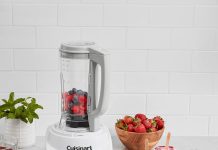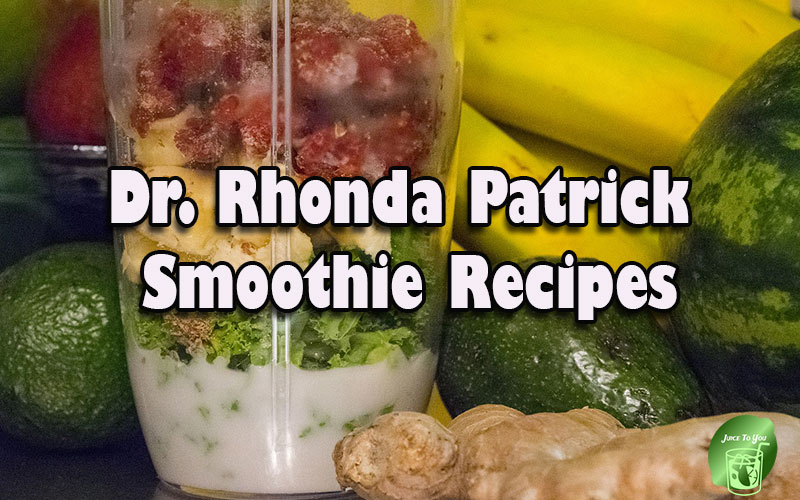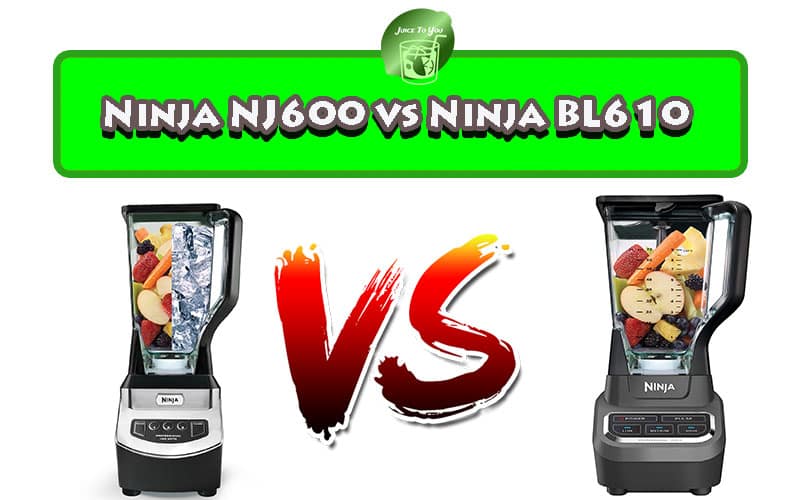Are you tired of your homemade juices and smoothies separating or becoming frothy before you even get to enjoy them fully? We’ve all been there! But fret not because we’ve got you covered. In this article, we’ll share some tried and tested tips on how to prevent your juice or smoothie from separating or getting frothy. So grab a pen and get ready to enhance your blending skills!
Review contents
Using the Right Ingredients
Choosing Fresh Fruits and Vegetables
When making juice or smoothies, it’s important to start with fresh fruits and vegetables. The quality and freshness of these ingredients can greatly impact the taste and texture of your final drink. Look for produce that is firm, vibrant in color, and free from bruises or blemishes. Choosing in-season fruits and vegetables will also ensure that you are getting the best flavor and nutritional value.
Selecting High-Quality Dairy or Non-Dairy Milk
The type of milk you use can affect the overall taste and consistency of your juice or smoothie. If you prefer a creamier texture, opt for high-quality dairy milk or non-dairy alternatives such as almond or coconut milk. It’s important to choose unsweetened varieties to avoid overpowering the natural sweetness of the fruits. Additionally, using milk that is fresh and within its expiration date will help maintain the desired texture.
Using Thickening Agents
To achieve a thicker consistency in your juice or smoothie, consider incorporating thickening agents. Popular options include yogurt, Greek yogurt, or silken tofu for a creamy texture. These ingredients not only add thickness to your drink but also provide additional protein and nutrients. Alternatively, you can use chia seeds or flaxseeds, which absorb liquid and create a gel-like consistency when blended.
Proper Blending Techniques
Blending in Stages
Blending in stages is crucial to ensure that all the ingredients are properly incorporated and to prevent over-mixing. Start by adding the liquid base, such as water, juice, or milk, followed by the fruits, vegetables, or other solid ingredients. This allows for better control over the blending process and helps avoid uneven distribution of ingredients. By gradually adding the ingredients, you can achieve a smoother texture and prevent any clumps or chunks from forming.
Blending on Low Speed
When blending juice or smoothies, it’s best to start with a low-speed setting. This allows the ingredients to gradually break down and ensures a consistent blend. High-speed blending can sometimes lead to overheating, which may affect the taste and texture of your drink. By starting on a low speed and gradually increasing if necessary, you can achieve a well-mixed and smooth beverage without compromising the flavors.
Avoiding Over-Blending
Over-blending can result in a loss of nutrients and can affect the overall quality of your juice or smoothie. It’s important to blend just enough to achieve the desired consistency without overdoing it. Once the ingredients are well-incorporated and the texture is smooth, stop blending. Over-blending can introduce excessive air into the drink, leading to frothiness or separation. Be mindful of the blending time to ensure the best results.
Temperature Control
Chilling Ingredients Before Blending
To enhance the freshness and prevent foaming, it is recommended to chill the ingredients before blending. Placing the fruits, vegetables, or liquids in the refrigerator for a short period can help maintain their quality and reduce the chances of foaming or separation. Chilled ingredients also contribute to a pleasantly cold and refreshing beverage, especially when using fresh fruits or vegetables.
Using Cold Liquid
Using cold liquid, such as chilled water or milk, can help maintain the desired temperature and prevent unwanted frothiness. Cold liquids also help to preserve the freshness of the ingredients and prevent overheating during the blending process. By keeping the temperature of the liquid low, you can enjoy a smoother and more enjoyable drinking experience.
Avoiding Hot Ingredients
Hot ingredients should be avoided when making juice or smoothies, as they can cause the drink to foam and separate. Heating fruits or vegetables can alter their texture and flavor, making it difficult to achieve the desired consistency. To prevent foaming and ensure a smooth blend, it’s important to let any hot ingredients cool down before adding them to the blender.
Balancing the Texture
Adding Ice Cubes
If you prefer a colder and thicker juice or smoothie, adding ice cubes can help achieve the desired texture. Ice cubes not only contribute to a refreshing drink but also provide a natural thickening effect, especially when combined with other ingredients. When using ice cubes, it’s important to consider the flavor and dilution, as excessive ice can dilute the taste of your drink.
Using Frozen Fruits
Frozen fruits are an excellent way to add thickness and creaminess to your juice or smoothie. They not only help chill the drink but also contribute to a thicker texture without the need for additional ice cubes. Frozen fruits are readily available in most grocery stores, or you can prepare your own by freezing ripe fruits when they are in season.
Incorporating Creaminess
To achieve a creamy texture in your juice or smoothie, consider incorporating ingredients such as yogurt, bananas, or avocados. These creamy additions not only enhance the texture but also provide a subtle richness to your drink. Yogurt, in particular, adds a tangy flavor and can be a good source of probiotics, while bananas and avocados add natural sweetness and a velvety consistency.
Managing Foam and Froth
Avoiding High-Speed Blending
High-speed blending can introduce excessive air into the drink and generate foam or froth. To prevent this, it’s important to avoid blending at the highest setting. Opt for a moderate speed that allows the ingredients to blend evenly without incorporating too much air. This will result in a smoother texture and reduce the chances of foam or froth formation.
Letting Bubbles Settle
After blending, let the juice or smoothie sit for a few minutes to allow any bubbles or foam to rise to the surface and settle. This will help improve the overall appearance of your drink and ensure a consistent texture when serving. Gentle tapping or swirling of the container can also help to release any trapped air and minimize foam.
Skimming off Foam
If foam forms on the surface of your juice or smoothie, you can gently skim it off using a spoon or a ladle. This will help remove any excess foam that may affect the taste or presentation of your drink. Be careful not to remove too much liquid along with the foam, as it can lead to a loss of volume or change in consistency.
Using Binders
Adding Natural Thickeners
Natural thickeners, such as chia seeds or flaxseeds, can be added to your juice or smoothie to enhance the texture and prevent separation. These tiny seeds absorb liquid and create a gel-like consistency when blended, providing a thicker and more satisfying drink. Chia seeds and flaxseeds are also rich in fiber and omega-3 fatty acids, adding a nutritional boost to your beverage.
Incorporating Pectin or Gelatin
Pectin and gelatin are commonly used as binders in cooking and baking, but they can also be used to stabilize your juice or smoothie. These ingredients help prevent separation by forming a gel-like structure and holding the liquid together. Pectin is a natural fiber found in fruits and can be purchased in powder or liquid form, while gelatin is derived from animal collagen. Both options can be added to your blender along with other ingredients for a smooth and cohesive blend.
Using Xanthan Gum
Xanthan gum is a popular food additive that acts as a thickening agent and stabilizer. It can be used in small quantities to improve the texture and prevent separation in your juice or smoothie. Xanthan gum is gluten-free and suitable for use in both dairy and non-dairy beverages. When using xanthan gum, it’s important to follow the recommended dosage, as excessive amounts can result in a slimy texture.
Emulsifying Ingredients
Using Emulsifiers
Emulsifiers are substances that help mix ingredients that would otherwise separate, such as oil and water. When making certain types of juice or smoothies that require the incorporation of oils or fats, using an emulsifier can help achieve a smooth and homogenous blend. Popular emulsifiers include soy lecithin, sunflower lecithin, or egg yolk. These emulsifiers help stabilize the mixture and prevent separation, resulting in a more cohesive and visually appealing drink.
Incorporating Lecithin
Lecithin, derived from soy or sunflower seeds, is a natural emulsifier that can help prevent separation in your juice or smoothie. It acts as a bridge between water and fat molecules, allowing them to bind together and create a stable mixture. Lecithin is available in both liquid and powder form and can be added directly to the blender. By incorporating lecithin, you can achieve a smooth and well-emulsified drink.
Blending Oil Gradually
When adding oils to your juice or smoothie, it’s important to blend them gradually and in small amounts. This allows for better emulsification and ensures that the oil is evenly distributed throughout the drink. Adding oil all at once can lead to separation and a greasy texture. By drizzling the oil slowly while blending, you can achieve a perfectly blended juice or smoothie without any signs of separation.
Preventing Separation
Using Proper Ratios
Maintaining the right balance of ingredients is crucial for preventing separation in your juice or smoothie. The ratio of liquids to solids, as well as the type and consistency of the ingredients, can greatly impact the overall stability of the blend. It’s important to follow recipe guidelines and experiment with different ingredient combinations to find the best ratio that suits your preferences. By ensuring the proportions are balanced, you can minimize the chances of separation and enjoy a well-incorporated drink.
Shaking or Stirring Before Serving
If you notice any separation or settling in your juice or smoothie, a simple solution is to give it a quick shake or stir before serving. This will help redistribute any ingredients that may have settled at the bottom and create a more uniform texture. It’s important to note that some separation may occur naturally, especially if the juice or smoothie contains ingredients with different densities. In such cases, periodic shaking or stirring can help maintain a consistent blend throughout.
Optimizing Blender Speed
Adjusting Speed Based on Ingredients
Different ingredients require different blending speeds to achieve the desired consistency. Softer and more delicate fruits, such as berries or bananas, can be blended at a higher speed, while firmer fruits or vegetables may require a lower speed to break down properly. By adjusting the blender speed based on the ingredients being used, you can ensure a thorough blend without risking overheating or over-mixing.
Using Pulse Function Effectively
The pulse function on your blender can be a helpful tool for achieving the desired texture in your juice or smoothie. The short bursts of high-speed blending provided by the pulse function allow for better control and prevent over-blending. This function is particularly useful when incorporating chunkier ingredients or creating a thicker and more textured drink. By using the pulse function effectively, you can achieve the perfect balance between smoothness and chunkiness.
Post-Blending Techniques
Straining the Juice or Smoothie
If you prefer a smoother and pulp-free juice or smoothie, consider straining the blend after blending. Using a fine-mesh sieve or cheesecloth, strain the mixture to remove any solids or fibers, resulting in a silky-smooth texture. This technique is especially useful when using fibrous fruits or vegetables that may contribute to a grainy texture. Straining the juice or smoothie can also help remove any excess foam or froth that may have formed during the blending process.
Allowing Settling Time
After blending, it’s important to allow the juice or smoothie some settling time before serving. This allows any foam, bubbles, or separated layers to naturally separate and settle. By giving the drink a few minutes to rest, you can achieve a more visually appealing presentation and ensure a consistent texture throughout. Gentle tapping or swirling of the container can also facilitate the settling process.
By following these tips and techniques, you can prevent separation, minimize foam and froth, and achieve the perfect texture in your juice or smoothie. Remember to use fresh ingredients, blend in stages, control the temperature, balance the texture, and optimize your blender speed. With a little practice and experimentation, you can create delicious and visually appealing juice or smoothies that are both refreshing and nutritious. So grab your blender, gather your favorite ingredients, and start blending your way to a delightful beverage experience!

































